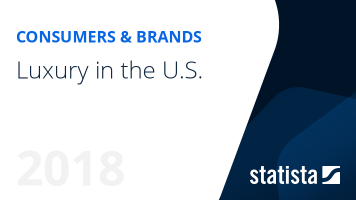Affluents in the United States - Statistics & Facts
However, the desire for a certain standard of living is not exclusive to the wealthy. According to a survey of Millennials in the U.S., for example, the general tenor indicated that the majority of them like to treat themselves to luxury items on certain occasions. The global luxury goods industry is thriving, and the United States is at the forefront by far.
Despite increasing living costs, disposable income in the United States has increased throughout the past decade, with a discernible shift in spending towards investments perceived to offer higher quality and additional benefits. The affluent demographic represents a highly sought-after consumer segment, extending beyond the ultra-wealthy.
Consequently, retailers often market luxury goods as symbols of tradition or exclusivity to reach a broader audience. With ample financial resources at their disposal, affluent consumers gravitate towards a variety of expenditures, including fashion items, cosmetic procedures, or experiential pursuits like travel and leisure activities. Additionally, there has been a shift away from luxury cars towards hybrids, reflecting a growing emphasis on sustainability.
The quest for affluence in America is complex, with concerns surrounding income inequality, consumerism, and environmental sustainability. Driven by aspirations for financial security, social status, or personal fulfillment, some achieve affluence while others are forced to navigate systemic barriers and economic challenges to ascend the socioeconomic ladder.
















































